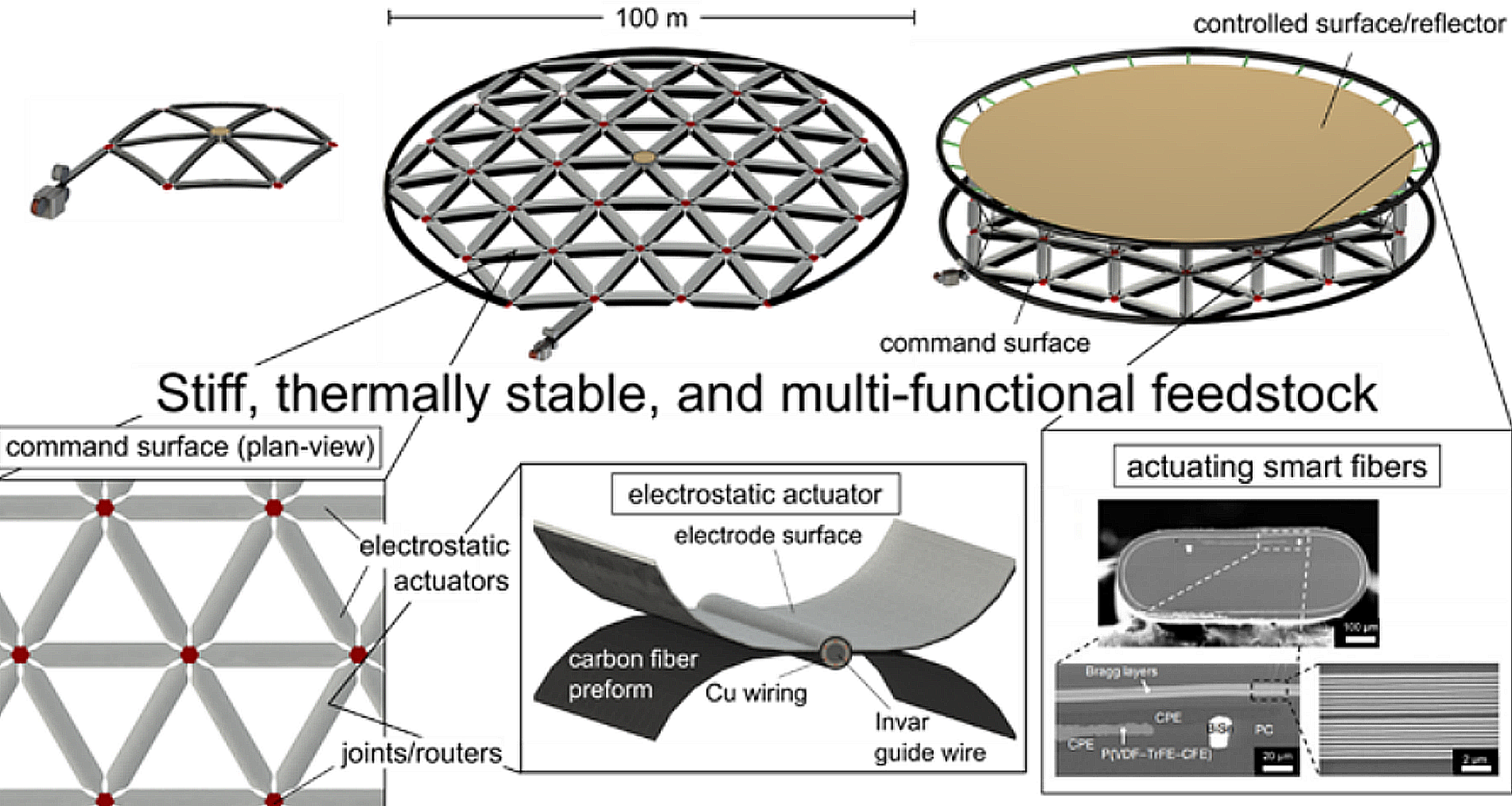Zachary Cordero
Massachusetts Institute of Technology
Current large reflectors used in space-based sensing and comms applications are packaged for launch, then deployed once on orbit. Size and surface precision tradeoffs limit such deployable reflectors to diameters of 10s of meters. In this NIAC effort, we aim to overcome this limitation by using a novel in-space manufacturing method and advanced materials to fabricate high-performance reflectors with dimensions greater than 100 m, 100 m/m surface precision, and specific area in excess of 10 m2/kg. The structures enabled by the proposed approach will benefit a wide range of spaceflight activities, from sensing and comms, to emerging solar sail and power generation technologies. The proposed in-space manufacturing technique, Bend-Forming, invented at MIT by the PIs, relies on a combination of CNC deformation processing and hierarchical high-performance materials to form stiff, lightweight trusses in which each member is also an individually addressable electrostatic actuator. Large Bend-Formed structures, in addition to their native precision, can use their electrostatic actuators to contour a reflector surface with sub- m precision. In contrast to other in-space assembly and in-space manufacturing approaches, Bend-Forming is low-power, low-temperature, and operationally robust. Additionally, the resulting smart structures, which are uniquely enabled by the space environment, leverage multifunctional materials to achieve unprecedented combinations of size, mass, stiffness, and precision, breaking the design paradigms that limit conventional truss or tension-aligned space structures. We will investigate how Bend-Forming can be used in GEO to create a microwave radiometry reflector which achieves full earth coverage, with a field of view of 15 and a ground resolution of 35km at a proposed operation frequency in the O2 absorption range, spanning 50 to 56GHz, thus enabling retrieval of atmospheric temperature profiles and continuous investigations of the internal structure of tropical cyclones. This capability would far surpass existing microwave radiometry technology, providing continuous soundings and precipitation measurements under both clear and cloudy conditions, with very rapid refresh rates. These observations will lead to significant improvements in storm forecasts as well as improved understanding of atmospheric processes related to the hydrologic cycle.































